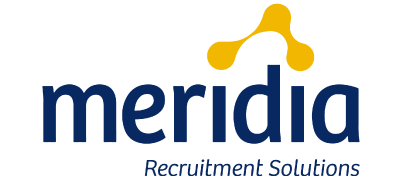
What is Employer Brand and Why Does it Matter?
Like it or not, every company has a brand. In the traditional marketing sense, a brand is what differentiates one good, product or service from another. A name, design and reputation all shape a brand’s image and the public’s understanding of the value proposition. Similarly, employer brand is the look, feel, and reputation of an employer and it is what current and prospective employees use to evaluate whether or not your company is an attractive place to work. Often, employer brand goes hand-in-hand with consumer brand - but not always.
In 2015, When LinkedIn released its top 100 most in demand employers, no one was suprised to see big consumer brands like Google, Apple and Unilever in the top three. When you think of Google’s consumer brand, you might use words like “innovative”, “exciting” and “international” to describe their products and services. You might also use these words to describe their company culture and what it might be like to work there.
Even though most of us have never worked at Google, we imagine that it is a place where ideas are shared, collaboration thrives, creativity flows and employees are happy. We’ve all heard about Google headquarters that was recently featured in the movie Internship, with its flexible working hours and on-site cafeteria, gym and day-care amenities. Google was very deliberate in creating this reputation not only to keep their current employees happy, but also to attract the best and brightest future employees.
Creating a culture like Google or Apple might not be practical or even possible for many organizations. However, here are a few things every employer should consider when evaluating and attempting to influence their employer brand.
Consumer Brand. Often consumer brand and employer brand are connected; one can positively (or negatively) influence the other. As Google outperforms the competition in the marketplace, they attract top candidates from companies like Yahoo and Microsoft. Simply put, winning candidates want to work for winning organizations. Companies who aren’t as well known in the consumer market, but are well established in the business-to-business market, still have a great opportunity to leverage their employer brand as is the case with our client Sampling Technologies Inc (STI). This Atlantic Canadian company, well known for strong B2B relationships, has focused on hiring top performers and fostering a winning culture of growth and innovation. As a result, STI is gaining momentum in attracting top candidates.
Reputation in the Community. Corporate social responsibility is a phrase that is often used when companies define their value statement. While it can be very beneficial to define your community engagement strategy, it is vital to go beyond planning and turn your words into actions. Prospective candidates want to know if you care about your community, as your reputation will impact theirs. Encouraging and accommodating meaningful involvement – either through participation on not-for-profit boards or through hands-on volunteer activities – supports personal development and enriches lives. Countless organizations are using social media to celebrate their community involvement and, more importantly, to create stronger community engagement.
Current Employees and Alumni. What your current and past employees have to say about your organization speaks volumes about your brand. A variety of factors can affect job satisfaction including growth potential, compensation, benefits, and culture, to name a few. Understanding what motivates your employees is vital in creating an environment where employees feel valued and involved in the success of the organization. If someone does leave, ensuring they leave in a way that is positive and respectful is important too. Word of mouth is a powerful thing, so make sure people have positive things to say about your organization. Many organizations provide departing employees with career transition support for exactly this reason.
Potential Candidate Relations. Often the recruitment process is a prospective employee’s first introduction to your organization and can set the stage for the employment relationship. Having a well-written ad that highlights your organization as an employer of choice and articulates the expectation of the role and the ideal candidate is vital. Communication throughout the process is also crucial to building trust; thanking candidates for applying and notifying them of the outcome are very important touch points that are often overlooked. When a final candidate is selected, having open and honest dialogue regarding the role, expected outcomes, challenges, measurements of success and even compensation is another way to further the relationship. Finally, building a strong relationship with your ideal candidate can begin before a vacancy occurs. Supporting networking groups for industry professionals or developing partnerships with related education programs are excellent ways to build communities and foster support within related industries.
Your employer brand is what can attract (or deter) prospective employees to your organization. If your organization does not consciously shape your employer brand image you risk the public drawing their own conclusions – good or bad. In the proverbial war for talent, it is important to ‘out-shine’ your competitors and brand your organization as a great place to work.

Find the right talent for your organization’s unique needs with our team of recruitment professionals.





